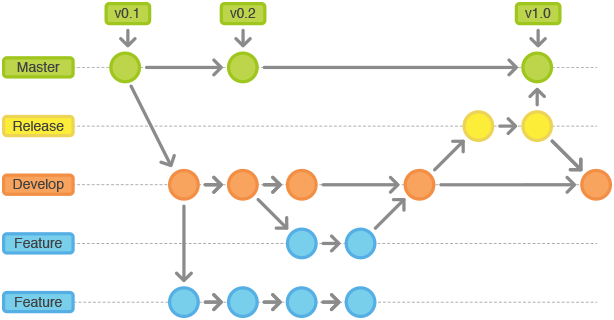

git checkout master Switched to branch master Before merging, open myfile.txt and check the content of the file. If you didn't like the article or you have an idea for improvement, please reach out to me on Twitter and drop me a DM with feedback so I can improve and provide better content in the future 💪. To merge commits into the master branch, lets now switch over to the master branch. I am sharing some other tips, articles, and things I learn there. If you enjoyed it and learned something new, support me by clicking the share button below to reach more people and/or give me a follow on Twitter where we can catch up. Finally, the merge command takes the given commit, which you can name as origin/master, and does whatever it takes to bring in that commit and its ancestors, to. Thank you for reading this to the end 🙌. described later to merge the master branch into the feature branch. I don't recommend blindly use rebase to keep your feature branches up to date but for larger projects, my preference is to use rebase instead of merge. In the New Branch dialog, you select the base you want to create the branch from. With it, we don't have to resolve the same conflict all over again. Instead of actually merging the branches, all Git has to do to integrate the histories is move (i.e.
GIT MERGE MASTER INTO BRANCH SERIES
we are losing the chronological order - IMO this is not a problem at all because we achieve a series of intentional changes that are made to master branch.Instead, create a bugfix branch with the name of the issue key (e.g.
GIT MERGE MASTER INTO BRANCH SOFTWARE
it can be confusing for less experienced Git users Current approach at K15t Software Dont commit fixes directly to the master.name: Merge branch with labeled on : pullrequest : types: labeled jobs : merge-branch : runs-on: ubuntu-latest steps : - uses. Do you need to merge the master Git branch into a branch in your repository Its not hard.The trick You must be on the other Git branch master must merge i. Rebasing publicly impacts other people in the branch. Rebasing privately affects only the individual (prior to work being pushed). When you set a label in a pull request this action can merge the pull request branch to other branch, useful for develop branch or staging environments. At Perforce, we believe neither the always merge nor always rebase extreme is necessary. There are a couple of things to keep in mind though: Merge pull request branch using GitHub labels. ability to easily change our feature branch history.long tramlines from long-lived feature branches.After fixing merge conflicts, git add FILE previously merge conflicted files. making the history in our master branch much easier to follow because it is linear Enter git fetch origin (This syncs your main branch with the latest changes) Enter git rebase origin/main (or git rebase origin/master if your main branch is named master) Fix merge conflicts that arise however you see fit.


 0 kommentar(er)
0 kommentar(er)
